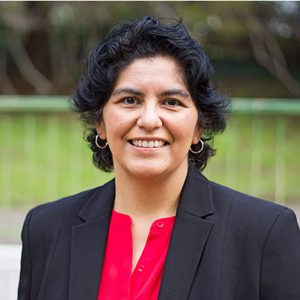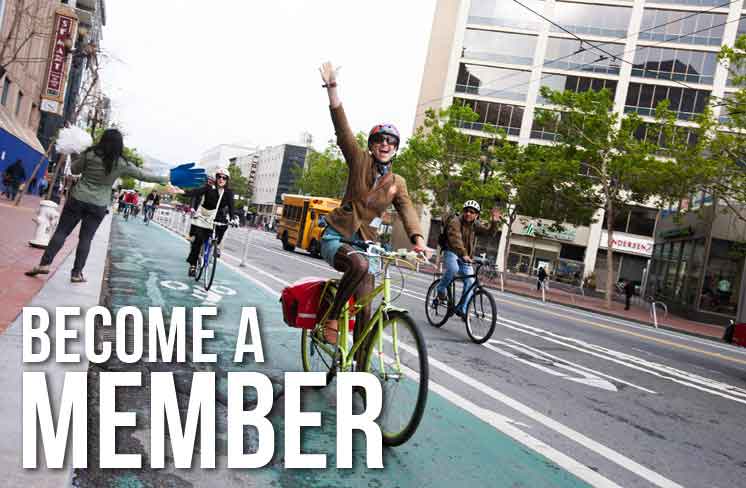Candidate Facts
 |
Name: Kimberly Alvarenga Campaign Website: www.kimalvarenga.com |
Candidate Questionnaire
All official candidates were contacted and given the opportunity to answer our Candidate Questionnaire. Any candidate responses edited for length and clarity have been marked as such.
1. Do you ride a bicycle in the city?
Yes
If “Yes,” how often do you ride and for what purpose(s)?
I bicycle with my family regularly in McLaren Park for recreation.
2. The City has established a goal to at least double the number of bike trips in the next 3 years. Do you support this goal?
Yes
If yes, what would you do as Supervisor to help the city realize it?
Transportation is the largest source of greenhouse gas emissions in California. San Francisco has a Transit First policy. This means giving priority to transit and balancing the use of our streets for pedestrians, bicycles, and cars. In order to get people out of their cars, we must provide alternative means of transportation including safe accessible public transit, pedestrian improvements, and making our streets safe for bicyclists. I was born and raised in San Francisco and so it is dramatic to me how many people now use bicycling as their major means of transportation. [RESPONSE TRUNCATED]
3. Our City has embraced and adopted Vision Zero, the goal to eliminate all fatalities and serious injuries on our streets by 2024. Do you support Vision Zero?
Yes
If “Yes,” the city has yet to make significant progress since the introduction of Vision Zero in 2014. In fact, fatalities are on the rise. What would you do as Supervisor to help the city achieve Vision Zero?
The purpose of Vision Zero is to make improvements to make streets safer, educate on traffic safety, and enforce traffic laws so we will reach Zero fatalities. There are many improvements that can be made to achieve this goal e.g. narrowing crossing distances and mechanisms to slow traffic. Vision Zero has not been achieved in large part because programs to promote this goal are not adequately funded. This will be one of my budget priorities.
4. Research and data has shown that building high-quality protected bike infrastructure is the most effective way to increase the number of people who bike. Despite this, there remain very few streets and corridors in San Francisco with protected bike lanes. Do you support the significant expansion of protected bike infrastructure, recognizing that this is often achieved by reallocating space on our streets that may decrease on-street car parking or vehicle travel lanes?
Yes
If “Yes,” what is at least one street or corridor in your District that you think would most benefit from a protected bike facility and why?
I literally live at the door step of McLaren Park, the second largest park in San Francisco. Mansell Street is a high speed street that runs through the middle of McLaren Park. Improvements are finally being made so vehicle traffic is restricted to one side of the park and the other side will be separated and have protected paths for people walking and bicycling. A bicycle skills park is also planned for McLaren Park.
5. The SF Bicycle Coalition participated in the Mayor’s Transportation 2030 Task Force, which identified significant funding gaps for a safe, reliable transportation system. To continue building out the bike network, the original need until 2030 was $360 million, which has now increased to $660 million, by City estimates. Do you support increased allocation and funding for bike projects to at least match the percentage of San Franciscans who bike?
Yes
6. The Department of Public Health has used data to develop the “high-injury network” to show the 12% of city streets where over 70% of the collisions occur. This map has also shown that low-income communities are disproportionately affected by traffic collisions. If Supervisor, what would you do to prevent collisions in your District at these known locations?
The Metropolitan Transportation Commission also identified “Communities of Concern” that show low-income communities, communities of color, and seniors are disproportionately affected by traffic collisions. This is the community of people who must rely on walking and transit as their primary means of transportation. Studies have shown that key risk factors are speed, driver’s failure to yield, and left turns being made without careful attention. Any effective action plan has to include education, engineering, and enforcement. We need to educate the public so they know safe practices of driving, walking, bicycling. [RESPONSE TRUNCATED]
7. Market Street is San Francisco’s most-biked street, with nearly 7,000 trips by bike counted here every day. The City is working on the Better Market Street project, which calls for limiting private automobiles, creating a continuous, protected bike lane for the full length of the project from the Embarcadero to Octavia Boulevard and significantly advancing transit and pedestrian-friendly street design. Do you support this plan?
Yes [RESPONSE TRUNCATED]
8. Data has shown that the five most dangerous behaviors are all driver-related offenses: speeding, failure to yield to pedestrians, improper right-hand turns, running red lights and failure to stop at stop signs. The San Francisco Police Department has committed to maintaining 50% of their traffic citations to “Focus on the Five,” a goal they have yet to meet citywide. Do you support Focus on the Five and smart, data-driven enforcement?
Yes
9. As Supervisor, what will you do to ensure SFPD focuses enforcement on Focus on the Five or other known issues that make our streets unwelcome to bike on, such as double-parking in bike lanes, rather than ad hoc, complaint-driven enforcement?
“Focus on Five” is a common sense approach to make streets more friendly and safe. The Police Commission receives quarterly reports but as a member of the Board of Supervisors, I would require regular reporting of the SFPD on achieving their 50% goal.
10. Bay Area Bike Share is in the middle of a game-changing, tenfold expansion of its system to become one of the densest bike share networks in the United States. Do you support the expansion and placement of bike share stations in your District, even if this may mean repurposing of on-street vehicle parking?
Yes
District-Specific Questions
1. The Planning Department led the Ocean Avenue Corridor Design Study, which was completed in 2015 after extensive public outreach. Recommendations in the study included a redesign and plaza treatment for the intersection of Ocean, Phelan and Geneva Avenues as well as the inclusion of a westbound bike lane between I-280 and Phelan Avenue. Do you support the study’s findings?
Yes
If “Yes,” what would you do as Supervisor to advance the design and implementation of the Ocean Avenue Corridor Design Study?
The Ocean Avenue Corridor Design Study is a good example of city departments working collaboratively for the common goal of making Ocean Avenue a safe, clean, accessible pedestrian/bicycle/ transit hub. The Planning Department was the lead agency but they worked closely with Department of Public Works and Municipal Transportation Agency. Streetscape improvements will be made using Prop B, Road and Repaving and Streets Safety Bond measure which was approved by voters in 2011. Building on previous studies, it is an example of planning at its best. [RESPONSE TRUNCATED]
2. As San Francisco becomes a more expensive city to live in, we know that biking provides an affordable and sustainable way to get around. To increase access to bikes, the SF Bicycle Coalition organizes and leads the Bike it Forward program. We reclaim unclaimed and abandoned bikes from the SFMTA, BART, the SFPD and other agencies, which are then repaired with the help of our volunteers. Neighborhood residents sign up with our partner organizations in advance to participate and receive a bike. As Supervisor, do you support this program and its expansion?
Yes
3. Do you agree that biking is an affordable mode of transportation?
Yes [RESPONSE TRUNCATED]
If “Yes,” what would you do as Supervisor to increase biking in your District?
I believe we can increase biking in District 11 if we can improve the amenities in the district. We have very few bike corrals on the commercial corridor, no connected network of dedicated bike lanes, and no protected bike lanes in District 11. There are plans and some funding to improve this situation, but I would like to see much more. For example, we have a wonderful “Walk, Bike, and Roll” program in the district, started by a committed parent, to encourage more walking and biking to school. However, our schools do not have enough bike corrals. [RESPONSE TRUNCATED]

